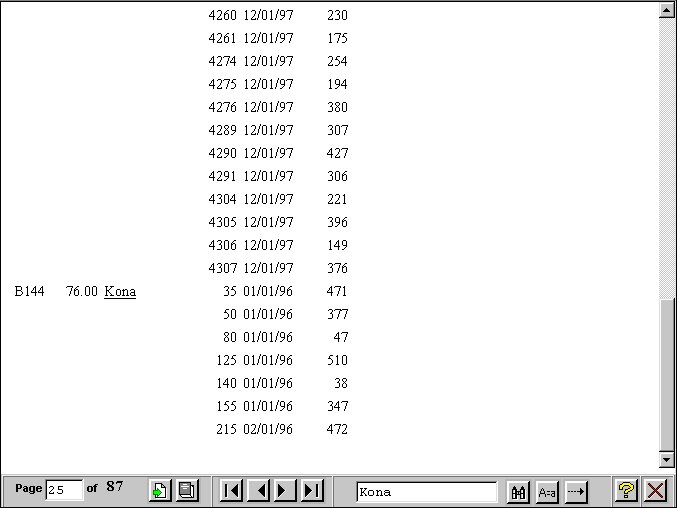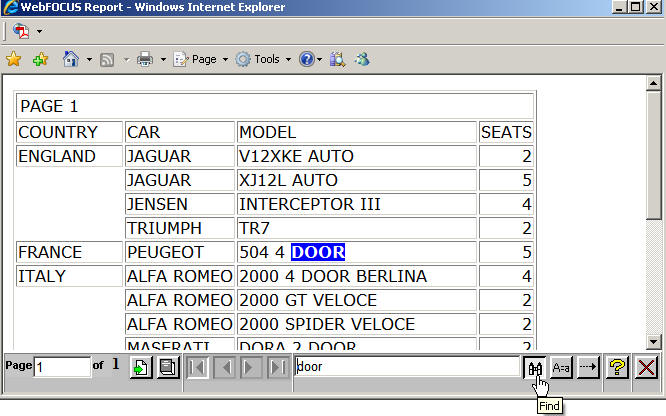
In this section: How to: |
The Viewer Control Panel, as shown in the following image, (located at the bottom of the window) contains the controls you use to navigate through the report and to search for a string in the report. The Viewer Control Panel navigational controls allow you to display the next or previous page, the first or last page, or a specific page. You use the searching function to have the Viewer locate a search string you specify within all report pages.

Note: When specifying a search string, you must specify the actual number of spaces between characters because HTML displays a single space, even when multiple spaces are used between characters.
The Viewer Control Panel offers several ways to view pages in your report:






How to: |
The Viewer Control Panel contains controls that offer several ways to search your report. Using the Viewer search controls, you can select a string of information, such as a phrase that occurs in your report or a group of numbers, and search for each occurrence of that string. You can further customize your search by matching capitalization of words exactly (a case-sensitive search) or by controlling the direction of your search (either forward or backward from your starting point in the report). Use these controls to search your report:



Notice that the WebFOCUS Viewer displays the Match Case button with a red line across it to indicate that it is active.
The WebFOCUS Viewer searches the report and underlines the first occurrence of the string.
You want to use the Viewer Control Panel to navigate a long report called Coffee Sales to find occurrences of the string "Kona," a type of coffee that you sell. After you run the report, WebFOCUS displays the first page of the report in the Viewer.

The WebFOCUS Viewer returns your report with the first occurrence of your search string underlined, as shown in the following image.

The WebFOCUS Viewer searches the report and underlines the first occurrence of the text string found. You may customize the search results by applying a Cascading Style Sheet (CSS) with a color and/or style defined.
BODY {
font : x-small Verdana, Arial, Helvetica;
}
U {
background : Blue;
text-decoration : none;
color : White;
font : bold;
}In the CSS example code above, underlined text in the body of the report will be changed to set the background color to Blue, set the text to bold, and set the text color to White.
Note: Type .css as the file extension. For example, findcolor.css.
The location in which to save the CSS file depends on the WebFOCUS environment you are working in.
Note: CSS files are accessed from a Web accessible location. For WebFOCUS and Developer Studio installations, the /ibi_html alias is a location in which Web accessible content can be stored.
In the following code, the findcolor.css Cascading Style Sheet file is applied to the report:
TABLE FILE CAR PRINT CAR MODEL SEATS BY COUNTRY ON TABLE SET WEBVIEWER ON ON TABLE SET STYLE * CSSURL=/ibi_html/findcolor.css, $ ENDSTYLE END
Note: Fully qualify the URL to the CSS file when the CSS file is located on a different Web location than the WebFOCUS environment you are running the report from. For example: CSSURL=http://hostname[:port]/ibi_html/findcolor.css $, where hostname[:port] is the host name and port number of the Web or application server the CSS file is accessible from.
The WebFOCUS Viewer searches the report and highlights the first occurrence of the string found in blue. In the example below, a report using the findcolor.css Cascading Style Sheet file searches for and finds DOOR by highlighting the word in blue.

| WebFOCUS |